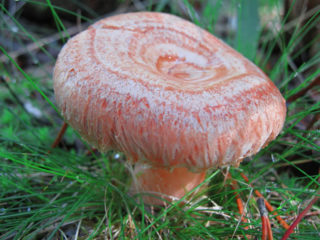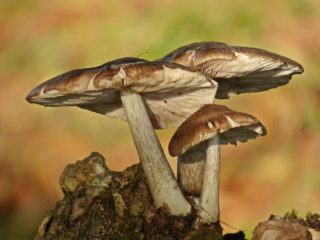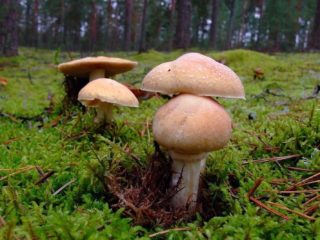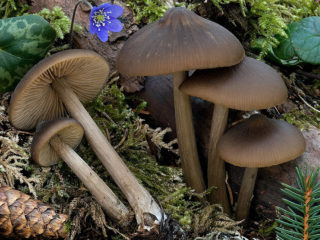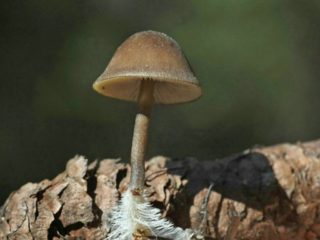Content
Cerrena unicolor is known under the Latin name Cerrena unicolor. Mushroom from the Polyporovye family, genus Cerren.

The species forms dense, numerous groups of fruiting bodies.
What does cerrene monochromatic look like?
The fungus has a one-year biological cycle, less often fruiting bodies are preserved until the beginning of the next growing season. Old specimens are stiff and fragile. The main color is gray, not monotonous with weakly expressed concentric zones of a brown or brown hue. On the edge, the seal is in the form of a beige or whitish color.
External characteristic of cerrene monochromatic:
- The shape of the fruit bodies is semicircular fan-shaped, outstretched with wavy edges, narrowed at the base.
- The cap is thin, up to 8-10 cm in diameter, sedentary, tiled. Mushrooms densely growing at one level, accrete with lateral parts.
- The surface is bumpy, densely covered with fine pile; closer to the base, areas are often found under moss.
- The hymenophore is tubular, weakly porous at the beginning of the growing season, then partially destroyed, becomes dissected, serrated with an inclination towards the base. Large oval cells are arranged in a labyrinth.
- The color of the spore-bearing layer is creamy with a gray or brown tint.
- The pulp is tough, corky, consists of two layers, the upper leathery pulp is separated from the lower by a black thin stripe. The color is beige or light yellow.
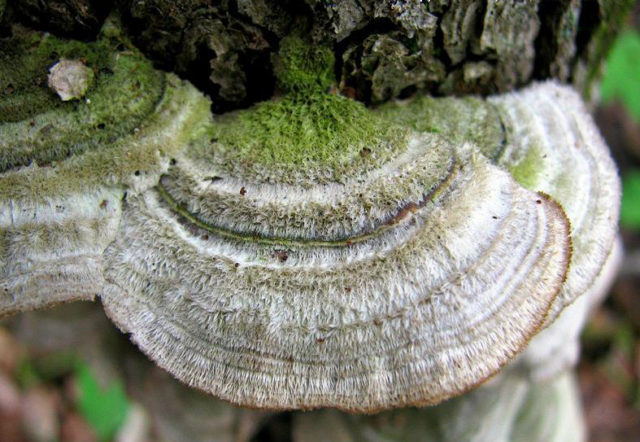
Radial stripes are concentrated in the upper part of the fruiting body
Where and how it grows
Common cerrene is widespread in the European part, the North Caucasus, Siberia, and the Urals. The species is not tied to a specific climatic zone. The fungus is a saprophyte parasite on the remains of deciduous trees. Prefers open areas, forest clearings, roadsides, ravines. Fruiting - from June to late autumn.
Is the mushroom edible or not
Cerrene monochromatic does not represent nutritional value due to its tough pulp and pungent odor. In mycological reference books, it is assigned to the group of inedible mushrooms.
Doubles and their differences
To a greater or lesser extent, Cerrene monochromatic is similar to the varieties of Coriolis. More similar in appearance is the covered trametez, especially at the beginning of development. The twin is inedible with thick-walled pores and a pale ash color. Odorless mushroom and black stripes between the layers.
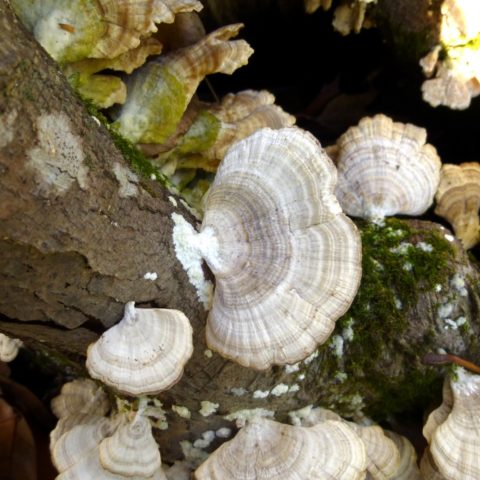
The stripes are dark gray, occasionally with a yellowish tinge, the edges are sharp and light brown
Conclusion
Cerrene monochromatic - tubular appearance with a pungent spicy odor. The representative is annual, grows on decaying remains of deciduous wood. The growing season is from early summer to late autumn, does not represent nutritional value.
